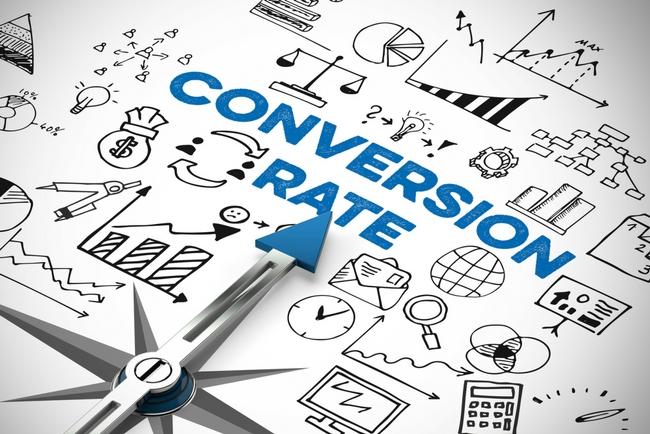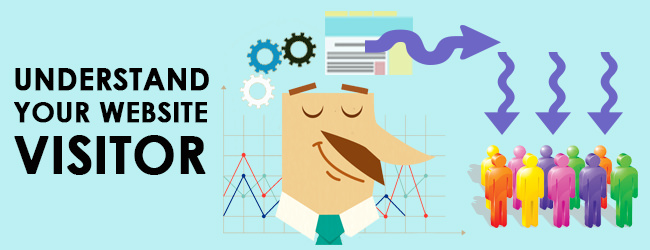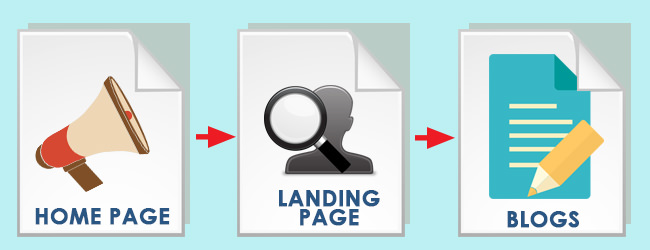
Designing a Website to Increase Conversion Rates
- Facebook54
- 55shares
When it comes to web design, the art of converting visitors has long been at odds with design. In this article we explore several ways to help reconcile these two important web design principles.
Behind closed doors and on the floor at your typical web design and development company, there is a common war going on. Web designers and website conversion rate optimisation specialists (CRO) are often at odds over what makes a particular website design a successful one.
Each role involved in the design of a modern website have their own objectives to reach, and now and again challenges may arise when one success indicator conflicts with that of another.
A Little Background
Before we can really dive into the challenges that can arise between a CRO and a web designer, defining these roles is probably the best place to start.
What is a CRO in Web Design?
A CRO’s role is strictly all about maximising the potential for website conversions through a call to action or to ensure that visitors can find exactly what they’re looking for.
In order to facilitate this role, a CRO is tasked with pouring over various data sources and analytics, measuring traffic data across platforms, undertaking A/B tests, and making recommendations based on their findings.
The role of a CRO is very technical, and its goals are clearly defined; collect and effectively analyse all data that will help turn website visitors into customers while making it actionable for a web designer.
What is the Role of a Web Designer?
In the early days of the web the role of a web designer was quite free-form; design a visually appealing website that is memorable and striking, while conveying information in an intuitive way.
The job attracted artists from all walks of life, and many print designers made the leap to web because of its “Wild West” nature. Awards were handed out for creativity and for which bells and whistles were instituted successfully –Macromedia Flash, anyone?
Simply put, the designer’s judgment stood in the place of best practices because there simply weren’t any. In fact, a company’s website was usually created by the marketing department alone, with little input from other facets of the organisation. And this is a key component in the debate that rages on between designers and CRO’s.
Today, design for the web is a much different story. Information architecture, user experience, and a plethora of other metrics have rightly crept into the mix and best practices have emerged and evolved over the last ten years or so.
As a result the role of a web designer is more about reconciling the various metrics and performance indicators while trying to make a website pretty. And that’s one tall order when websites aren’t simple brochure-style websites anymore.
Nowadays websites are fully featured software applications, and applications need to be easy to use before looking great. Reddit is a classic example of this with its useful interface and less than attractive design. But it’s consistent which makes it predictable, easy to use, and therefore effective.
You wouldn’t have Picasso to decide where the load bearing walls of a building go, and you wouldn’t want a data scientist to select the patterns for your curtains.
And what’s more is that there are a number of flavours of website designer; one for every kind of website. A designer who works at Facebook is going to be a whole other animal when compared to a designer from a high end fashion brand.
This goes double for your CRO; what makes an effective eCommerce solution might not work for a multimedia-heavy website.
Common Ground
At the end of the day these roles really wish they could always get along, but sometimes it just isn’t in the cards. Each have their own strong (and seemingly fanatical) ideas of what works on the web and what doesn’t, and even the personality types that each occupation attracts usually contrast one another greatly.
Both must work together to help advance the goals of conversion established during website discovery.
To wrap it up, both the role of a CRO and a web designer are quite specialised and the purpose of this article is to help each role better understand each other.
One thing is certain, and this fact unifies them: experience in your industry is everything.
Different markets have different goals, and you’re certain to have a better web design company experience if you select one that understands what makes your business tick.
A Note to Conversion Optimisers
You’re not a designer, so don’t try to be one. Who cares if you can’t doodle your way out of a paper bag or you don’t know the first thing about design. You don’t have to.
What’s important for you is to know and understand the driving forces behind the data you analyse, organic design, user optimisation, visual impact, and the style of your designer.
A Note to Designers
The days of being architect and interior decorator are over, and thank gosh for that. I know that every designer’s career would certainly benefit from winning a Webby Award but the criteria is about more than what feels right or looks good; web design is more user-centric than ever before and that means other significant factors now come into play.
Important things like business objectives, the psychology of the website visitor, and mathematical voodoo dictate where the walls will go up and which technologies will be used.
A user is expected to do something. And the direction they are to take is dictated by the overall design of the website. The design isn’t some secondary afterthought, it’s a centrally important factor.
A designer wants elegance and a CRO wants website conversions; pretty websites impress the website visitor, build trust and brand recognition –and conversion-centric web pages push the website visitor through the funnel.
Putting These Words into Action
Now it’s time to make sense of all of this; here are a few ways to help your CRO and your designer get along.
1. Is it clear to the website visitor what they can or should do?
Designers need only ask themselves if they have satisfied the emotional need for beauty, while CROs need concern themselves with whether or not they have satiated the visitors’ desire for action.

2. Have you considered the User Experience?
A good web design will be enjoyable, easy to understand how to find what a visitor is looking for, and therefore provide a discernible value. User experience is all about form meeting function where both design and conversion share centre stage.
3. Is your solution dictated by what’s best for the website visitor?
Understanding your website visitor is paramount to giving them exactly what they want. Ensuring that the flow from one area of the website to another is pragmatic and intuitive is a job one.

4. Less is More
Forget the old print design adage that white space is a no-no. White space is a useful tool in the shared toolbox of a designer and CRO alike.
Too much beauty can lead to a sluggish website visitor and white space can help draw attention to specific page elements or help dictate a path for a website visitor much like your local IKEA leads visitors along a prescribed path.
A website conversion is a ‘close’, and your website should always be closing. And ABC isn’t the only classic sales motto that applies to the web; don’t forget to KISS (keep it simple stupid). The simpler you make your website design, the better.
5. Keep Focus Front and Centre
Every page should have one central objective and it should be crystal clear as to what exactly that is. The main focus of any page should be in plain sight; a home page requires a call to action, a blog should focus on its text, and a landing page should make it clear what exactly is expected of the website visitor.
Adjusting the focus of your website visitor can be easily facilitated through effective use of contrasting colours, borders, larger fonts, and massive cover images.

In Conclusion
To sum it all up, make the objective for each page as in-your-face as possible, use white space to your advantage to draw focus, and slam dunk your focal points with a large image.
Have anything to add? Let us know in the comments.
- Facebook54
- 55shares

